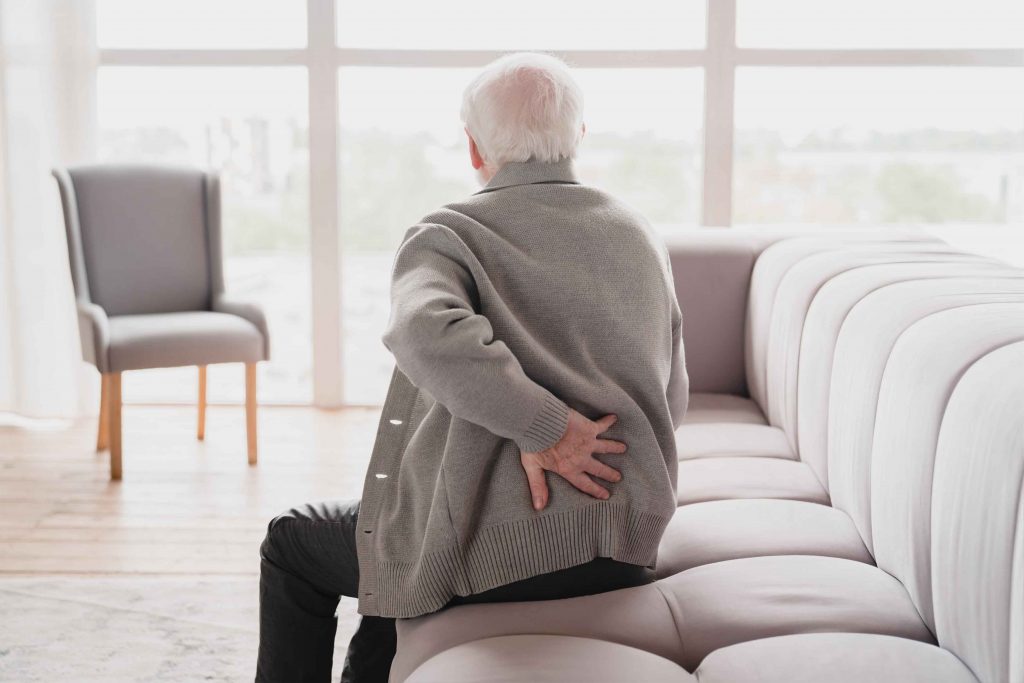Hey there, friend! If you’ve ever experienced that shooting pain down your leg, you might be familiar with sciatica. But did you know that lumbar spondylosis could be behind it? Let’s dive into the details!

What is Lumbar Spondylosis?
Lumbar spondylosis, also known as spinal osteoarthritis, is a common condition that affects the lower back. It’s characterized by the degeneration of the spinal discs and facet joints, leading to pain and stiffness in the lumbar region.
Understanding Sciatica
Sciatica refers to pain that radiates along the sciatic nerve, which runs from your lower back down each leg. It’s often caused by compression or irritation of the sciatic nerve roots in the lumbar spine.
The Connection Between Lumbar Spondylosis and Sciatica
So, how are these two related? Well, lumbar spondylosis can result in various spinal changes, such as bone spurs or herniated discs, which may compress the sciatic nerve roots and trigger sciatica symptoms. Here’s a closer look:
- Disc Degeneration: As the discs in the lumbar spine degenerate, they can bulge or herniate, putting pressure on the nearby nerve roots, including the sciatic nerve.
- Bone Spurs: With spondylosis, the body may respond by forming bone spurs (osteophytes), which can encroach upon the space around the nerve roots, causing irritation or compression.
- Spinal Stenosis: In some cases, lumbar spondylosis can lead to spinal stenosis, a narrowing of the spinal canal that can compress the nerves, including the sciatic nerve.
Common Symptoms
So, how do you know if your sciatica is related to lumbar spondylosis? Here are some common symptoms to watch out for:
- Sharp, Shooting Pain: Sciatica often manifests as a sharp, shooting pain that radiates from the lower back down one leg.
- Numbness or Tingling: You might experience numbness or tingling sensations in the leg or foot.
- Muscle Weakness: Sciatica can also cause weakness in the affected leg, making it difficult to stand or walk.
- Difficulty Sitting: Sitting for long periods may exacerbate symptoms, as it can increase pressure on the affected nerve.
Diagnosis and Treatment
If you suspect that your sciatica is linked to lumbar spondylosis, it’s essential to consult with a healthcare professional for a proper diagnosis. Here are some common diagnostic and treatment options:
- Physical Examination: Your doctor may perform a physical examination to assess your symptoms and range of motion.
- Imaging Tests: X-rays, MRI, or CT scans can help visualize the spine and identify any structural abnormalities.
- Medications: Pain relievers, muscle relaxants, or anti-inflammatory medications may help alleviate symptoms.
- Physical Therapy: Targeted exercises and stretches can strengthen the muscles supporting the spine and improve flexibility.
- Injections: Corticosteroid injections can provide temporary relief by reducing inflammation around the affected nerve roots.
- Surgery: In severe cases where conservative treatments fail to provide relief, surgery may be considered to decompress the affected nerve roots.
Conclusion: Finding Relief
In conclusion, lumbar spondylosis and sciatica often go hand in hand, with one condition exacerbating the symptoms of the other. By understanding the link between these two conditions and exploring appropriate treatment options, you can take proactive steps towards finding relief and improving your quality of life.
If you’re experiencing persistent back pain or sciatica symptoms, don’t hesitate to reach out to a healthcare professional for guidance and support. Remember, you’re not alone on this journey, and relief is within reach!
So, here’s to better days ahead – may your back be strong, your sciatica at bay, and your smile bright!